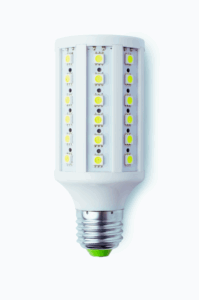How are 2023 NEC rules for disconnecting means in fluorescent and LED luminaires different?
Overview
Fluorescent and LED luminaires that use double-ended lamps, along with ballasts or LED drivers, require disconnecting devices such as switches or plugs to ensure safe maintenance and electrical isolation. In the 2023 NEC version, guidelines for these luminaires were relocated to Section 410.71(1), which now provides comprehensive coverage for both types. According to this section, a disconnecting device must be installed with each luminaire, either at the time of initial installation or during replacement or maintenance. This update guarantees that maintenance personnel can safely service both fluorescent and LED luminaires due to presence of disconnecting means, reducing the risk of electric shock and system damage.
Applying the 2023 Code
Fluorescent and LED luminaires using double-ended lamps are commonly used for their energy efficiency and durability. These luminaires typically incorporate ballasts or LED drivers, which are serviceable in place. Disconnecting means such as switches or plugs are essential for these luminaires because they enable safe control, maintenance, and replacement by isolating the electrical supply. This precaution prevents accidental electric shock or short circuits during servicing, guaranteeing the safety of maintenance personnel and the reliability of the lighting system.
In previous NEC versions, Section 410.130(G)(1) outlined guidelines for selecting disconnecting devices for fluorescent luminaires with double-ended lamps in indoor locations. According to these guidelines, each luminaire required a disconnecting device, either internally or externally mounted. For luminaires lacking a built-in disconnecting device, one had to be installed during ballast replacement. The terminals on the line side of the disconnecting device needed to be guarded. Exceptions to these requirements were granted for luminaires in hazardous locations, those providing emergency illumination, cord-and-plug-connected luminaires with accessible connectors, and installations where a disconnecting device would leave the area in complete darkness. However, these requirements only applied to fluorescent luminaires, excluding LED luminaires with double-ended lamps and LED drivers, despite their increasing popularity. The 2023 NEC version moved these requirements to Section 410.71(1) and expanded the scope to include LED luminaires. This revision unifies the safety standards for both fluorescent and LED luminaires with double-ended lamps, promoting consistent and improved maintenance practices across various lighting systems.
What’s New for the 2023 NEC?
The comparison of 2020 NEC Section 410.130(G)(1) and 2023 NEC Section 410.71(1) is given in the Table below.
2020 NEC |
2023 NEC |
| 410.130(G) Disconnecting Means
(1) General In indoor locations other than dwellings and associated accessory structures, fluorescent luminaires that utilize double-ended lamps and contain ballast(s) that can be serviced in place shall have a disconnecting means either internal or external to each luminaire. For existing installed luminaires without disconnecting means, at the time a ballast is replaced, a disconnecting means shall be installed. The line side terminals of the disconnecting means shall be guarded. Exception No. 1: A disconnecting means shall not be required for luminaires installed in hazardous (classified) location(s). Exception No. 2: A disconnecting means shall not be required for luminaires that provide emergency illumination required in 700.16. Exception No. 3: For cord-and-plug-connected luminaires, an accessible separable connector or an accessible plug and receptacle shall be permitted to serve as the disconnecting means. Exception No. 4: Where more than one luminaire is installed and supplied by other than a multiwire branch circuit, a disconnecting means shall not be required for every luminaire when the design of the installation includes disconnecting means, such that the illuminated space cannot be left in total darkness.
|
410.71(1) General
In indoor locations other than dwellings and associated accessory structures, fluorescent or LED luminaires that utilize double-ended lamps and contain ballast(s) or LED driver(s) that can be serviced in place shall have a disconnecting means either internal or external to each luminaire. For existing installed luminaires without disconnecting means, at the time a ballast or LED driver is added or replaced a disconnecting means shall be installed. The line side terminals of the disconnecting means shall be guarded. Exception No. 1: A disconnecting means shall not be required for luminaires installed in hazardous (classified) location(s). Exception No. 2: A disconnecting means shall not be required for luminaires that provide emergency illumination required in 700.16. Exception No. 3: For cord-and-plug-connected luminaires, an accessible separable connector or an accessible plug and receptacle shall be permitted to serve as the disconnecting means. Exception No. 4: Disconnecting means shall not be required for every luminaire in a building area if all of the following conditions apply: (1) More than one luminaire is installed in the building area (2) The luminaires are not connected to a multiwire branch circuit (3) The design of the installation includes disconnecting means (4) The building area will not be left in total darkness should only one disconnect be opened |
